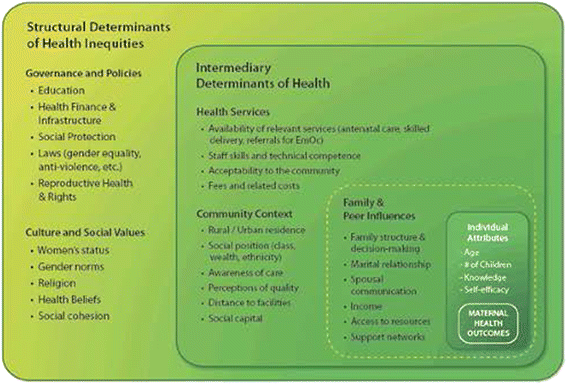The quality of free antenatal and delivery services in Northern Sierra Leone
- PMID: 28722561
- PMCID: PMC5516841
- DOI: 10.1186/s12961-017-0218-4
The quality of free antenatal and delivery services in Northern Sierra Leone
Abstract
Background: The number of maternal deaths in sub-Saharan Africa continues to be overwhelmingly high. In West Africa, Sierra Leone leads the list, with the highest maternal mortality ratio. In 2010, financial barriers were removed as an incentive for more women to use available antenatal, delivery and postnatal services. Few published studies have examined the quality of free antenatal services and access to emergency obstetric care in Sierra Leone.
Methods: A cross-sectional survey was conducted in 2014 in all 97 peripheral health facilities and three hospitals in Bombali District, Northern Region. One hundred antenatal care providers were interviewed, 276 observations were made and 486 pregnant women were interviewed. We assessed the adequacy of antenatal and delivery services provided using national standards. The distance was calculated between each facility providing delivery services and the nearest comprehensive emergency obstetric care (CEOC) facility, and the proportion of facilities in a chiefdom within 15 km of each CEOC facility was also calculated. A thematic map was developed to show inequities.
Results: The quality of services was poor. Based on national standards, only 27% of women were examined, 2% were screened on their first antenatal visit and 47% received interventions as recommended. Although 94% of facilities provided delivery services, a minority had delivery rooms (40%), delivery kits (42%) or portable water (46%). Skilled attendants supervised 35% of deliveries, and in only 35% of these were processes adequately documented. None of the five basic emergency obstetric care facilities were fully compliant with national standards, and the central and northernmost parts of the district had the least access to comprehensive emergency obstetric care.
Conclusion: The health sector needs to monitor the quality of antenatal interventions in addition to measuring coverage. The quality of delivery services is compromised by poor infrastructure, inadequate skilled staff, stock-outs of consumables, non-functional basic emergency obstetric care facilities, and geographic inequities in access to CEOC facilities. These findings suggest that the health sector needs to urgently investigate continuing inequities adversely influencing the uptake of these services, and explore more sustainable funding mechanisms. Without this, the country is unlikely to achieve its goal of reducing maternal deaths.
Figures




References
-
- WHO, UNICEF, UNFPA, World Bank Group and the United Nations Population Division . Trends in Maternal Mortality: 1990 to 2015. Estimates by WHO, UNICEF, UNFPA, World Bank Group and the United Nations Population Division. Geneva: WHO; 2015.
-
- United Nations Development Programme. Discussion Paper. A Social Determinants Approach to Maternal Health. Roles for Development Actors. 2011. http://www.undp.org/content/undp/en/home/librarypage/democratic-governan.... Accessed 19 Apr 2016.
-
- Kuruvilla S, Schweitzer J, Bishai D, Chowdhury S, Caramani D, Cortez R, Daelmans B, de Francisco A, Adam T, Alfonso NY, Franz-Vasdeki J, Saadat S, Pratt BE, Eugster B, Venkatachalam P, Hinton R, Murray Arscott-Mills S, Axelson H, Sarker I, Lakshminarayanan R, Jacobs T, Jacks S, Mason E, Mays N, Presern C, Bustreo F, Bandali S, Maliqi B, Ghaffar A. on behalf of the Success Factors for Women’s and Children’s Health study groups. Success factors for reducing maternal and child mortality. Bull World Health Organ. 2014;92:533–44. doi: 10.2471/BLT.14.138131. - DOI - PMC - PubMed
-
- World Health Organization Reducing maternal and newborn mortality in Africa. African Health Monitor. 2004;5(1):5–7.
MeSH terms
LinkOut - more resources
Full Text Sources
Other Literature Sources

